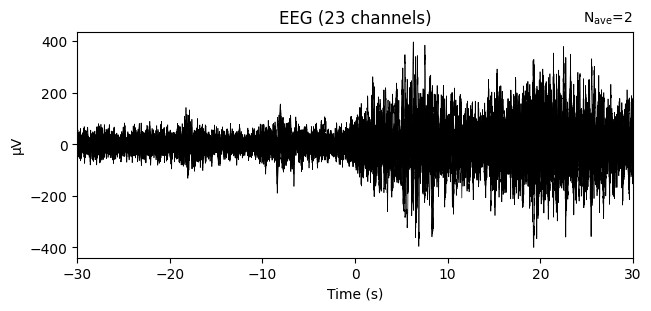Hybrid Deep Learning Approach for EEG-based Epilepsy Detection
Keywords:
Electroencephalogram, Independent Component Analysis, Principal Component Analysis, Gated Recurrent UnitAbstract
Epilepsy is a chronic neurological disorder characterized by continuous relentless seizures resulting from abnormal activity in the brain. Early and accurate diagnosis is very critical. The usual methods can take a lot of time for diagnosis and it can also often vary from one specialist to another. There have been many approaches implemented for detecting seizures with varying success. Electroencephalogram (EEG) analysis is a critical tool for diagnosing neurological conditions like epilepsy. A key focus in medical technology has been automating the detection of epilepsy but it has been challenging due to its complexity and large amount of data. Although the results of some studies have been encouraging, the use of these approaches has not been practical due to various issues i.e. imbalanced data signal variability to name a few. This research presents a new approach to improve performance and accuracy. A Hybrid Deep Learning model combines a number of paradigms of neural networks to leverage the best of multiple models in processing complex data like EEG signals. EEG. As EEG has both temporal and spatial data this hybrid approach is quite practical in handling different EEG components. In addition, a multimodal method is explored to enhance prediction performance. This involves enhancing EEG data with complementary data, such as clinical history and other biomarkers. Through integrating data from multiple sources, the model gains a broader context for epileptic activity detection. Which helps in bypassing the inefficiencies inherent in EEG signals. This combined approach can potentially provide stronger and clinically informative outcomes, hence enabling advancements in the early diagnosis of epilepsy.
References
G. L. Taylor and T. M. O’Shea, “Extreme prematurity: Risk and resiliency,” Curr. Probl. Pediatr. Adolesc. Health Care, vol. 52, no. 2, p. 101132, Feb. 2022, doi: 10.1016/J.CPPEDS.2022.101132.
A. Schulze-Bonhage, C. Kurth, A. Carius, B. J. Steinhoff, and T. Mayer, “Seizure anticipation by patients with focal and generalized epilepsy: A multicentre assessment of premonitory symptoms,” Epilepsy Res., vol. 70, no. 1, pp. 83–88, Jul. 2006, doi: 10.1016/j.eplepsyres.2006.02.001.
M. Li, W. Chen, and T. Zhang, “Automatic epilepsy detection using wavelet-based nonlinear analysis and optimized SVM,” Biocybern. Biomed. Eng., vol. 36, no. 4, pp. 708–718, Jan. 2016, doi: 10.1016/J.BBE.2016.07.004.
A. S. Al-Fahoum and A. A. Al-Fraihat, “Methods of EEG Signal Features Extraction Using Linear Analysis in Frequency and Time-Frequency Domains,” ISRN Neurosci., vol. 2014, pp. 1–7, Feb. 2014, doi: 10.1155/2014/730218,.
M. P. Hosseini, T. X. Tran, D. Pompili, K. Elisevich, and H. Soltanian-Zadeh, “Multimodal data analysis of epileptic EEG and rs-fMRI via deep learning and edge computing,” Artif. Intell. Med., vol. 104, p. 101813, Apr. 2020, doi: 10.1016/J.ARTMED.2020.101813.
W. T. Kerr et al., “Multimodal diagnosis of epilepsy using conditional dependence and multiple imputation,” Proc. - 2014 Int. Work. Pattern Recognit. Neuroimaging, PRNI 2014, 2014, doi: 10.1109/PRNI.2014.6858526,.
Y. Yuan, G. Xun, K. Jia, and A. Zhang, “A multi-view deep learning framework for EEG seizure detection,” IEEE J. Biomed. Heal. Informatics, vol. 23, no. 1, pp. 83–94, Jan. 2019, doi: 10.1109/JBHI.2018.2871678.
A. Malekzadeh, A. Zare, M. Yaghoobi, H. R. Kobravi, and R. Alizadehsani, “Epileptic Seizures Detection in EEG Signals Using Fusion Handcrafted and Deep Learning Features,” Sensors (Basel)., vol. 21, no. 22, p. 7710, Nov. 2021, doi: 10.3390/S21227710.
G. Zazzaro, S. Cuomo, A. Martone, R. V. Montaquila, G. Toraldo, and L. Pavone, “EEG signal analysis for epileptic seizures detection by applying Data Mining techniques,” Internet of Things (Netherlands), vol. 14, Jun. 2021, doi: 10.1016/J.IOT.2019.03.002.
A. Shoeibi et al., “Epileptic Seizures Detection Using Deep Learning Techniques: A Review,” Int. J. Environ. Res. Public Health, vol. 18, no. 11, p. 5780, Jun. 2021, doi: 10.3390/IJERPH18115780.
P. T. Krishnan, S. K. Erramchetty, and B. C. Balusa, “Advanced framework for epilepsy detection through image-based EEG signal analysis,” Front. Hum. Neurosci., vol. 18, p. 1336157, Jan. 2024, doi: 10.3389/FNHUM.2024.1336157/BIBTEX.
T. R. Goodwin and S. M. Harabagiu, “Multi-modal Patient Cohort Identification from EEG Report and Signal Data,” AMIA Annu. Symp. Proc., vol. 2016, p. 1794, 2017, Accessed: Jun. 05, 2025. [Online]. Available: https://pmc.ncbi.nlm.nih.gov/articles/PMC5333290/
B. Wang, Y. Xu, S. Peng, H. Wang, and F. Li, “Detection Method of Epileptic Seizures Using a Neural Network Model Based on Multimodal Dual-Stream Networks,” Sensors 2024, Vol. 24, Page 3360, vol. 24, no. 11, p. 3360, May 2024, doi: 10.3390/S24113360.
T. Islam et al., “Performance investigation of epilepsy detection from noisy EEG signals using base-2-meta stacking classifier,” Sci. Rep., vol. 14, no. 1, pp. 1–10, Dec. 2024, doi: 10.1038/S41598-024-61338-2;SUBJMETA=166,178,375,639,692,699,985;KWRD=BIOMEDICAL+ENGINEERING,EPILEPSY.
A. K. Dwivedi et al., “High-resolution multimodal profiling of human epileptic brain activity via explanted depth electrodes,” JCI Insight , vol. 10, no. 1, Jan. 2025, doi: 10.1172/JCI.INSIGHT.184518,.
Z. Huang et al., “EEG detection and recognition model for epilepsy based on dual attention mechanism,” Sci. Rep., vol. 15, no. 1, Dec. 2025, doi: 10.1038/S41598-025-90315-6,.
S. Mekruksavanich, W. Phaphan, A. Jitpattanakul, S. Mekruksavanich, W. Phaphan, and A. Jitpattanakul, “Epileptic seizure detection in EEG signals via an enhanced hybrid CNN with an integrated attention mechanism,” Math. Biosci. Eng. 2025 173, vol. 22, no. 1, pp. 73–105, 2025, doi: 10.3934/MBE.2025004.
S. Das, S. A. Mumu, M. A. H. Akhand, A. Salam, and M. A. S. Kamal, “Epileptic Seizure Detection from Decomposed EEG Signal through 1D and 2D Feature Representation and Convolutional Neural Network,” Inf. 2024, Vol. 15, Page 256, vol. 15, no. 5, p. 256, May 2024, doi: 10.3390/INFO15050256.
K. Wu, Z. Zhao, and B. Yener, “SeizureTransformer: Scaling U-Net with Transformer for Simultaneous Time-Step Level Seizure Detection from Long EEG Recordings,” Apr. 2025, Accessed: Jun. 05, 2025. [Online]. Available: https://arxiv.org/pdf/2504.00336
X. Cao, S. Zheng, J. Zhang, W. Chen, and G. Du, “A hybrid CNN-Bi-LSTM model with feature fusion for accurate epilepsy seizure detection,” BMC Med. Inform. Decis. Mak., vol. 25, no. 1, pp. 1–28, Dec. 2025, doi: 10.1186/S12911-024-02845-0/FIGURES/5.

Downloads
Published
How to Cite
Issue
Section
License
Copyright (c) 2025 50sea

This work is licensed under a Creative Commons Attribution 4.0 International License.




















